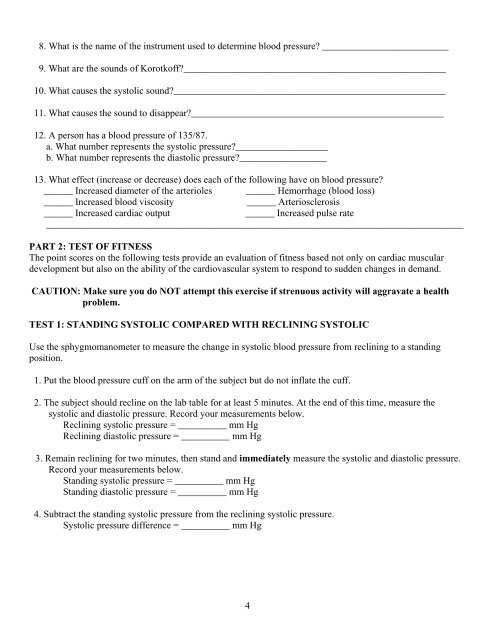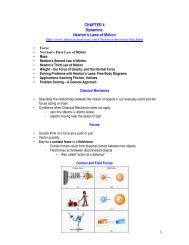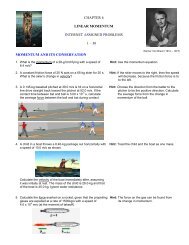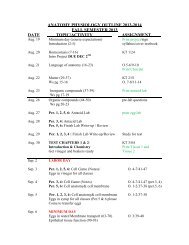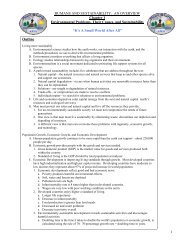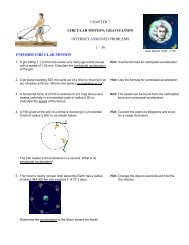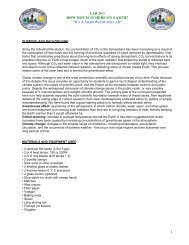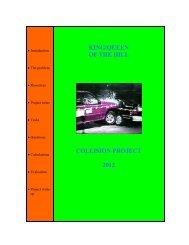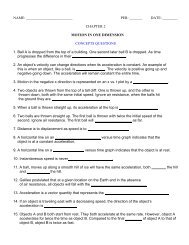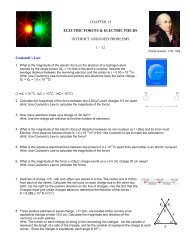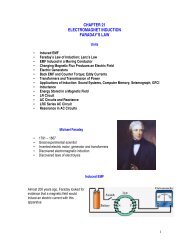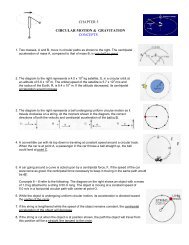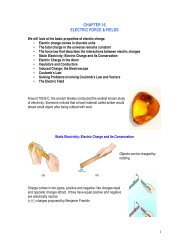Lab 13-1 Blood Pressure and Pulse Rate - Physics-matters.net
Lab 13-1 Blood Pressure and Pulse Rate - Physics-matters.net
Lab 13-1 Blood Pressure and Pulse Rate - Physics-matters.net
Create successful ePaper yourself
Turn your PDF publications into a flip-book with our unique Google optimized e-Paper software.
8. What is the name of the instrument used to determine blood pressure? __________________________9. What are the sounds of Korotkoff?______________________________________________________10. What causes the systolic sound?________________________________________________________11. What causes the sound to disappear?____________________________________________________12. A person has a blood pressure of <strong>13</strong>5/87.a. What number represents the systolic pressure?___________________b. What number represents the diastolic pressure?__________________<strong>13</strong>. What effect (increase or decrease) does each of the following have on blood pressure?______ Increased diameter of the arterioles ______ Hemorrhage (blood loss)______ Increased blood viscosity______ Arteriosclerosis______ Increased cardiac output______ Increased pulse rate______________________________________________________________________________________PART 2: TEST OF FITNESSThe point scores on the following tests provide an evaluation of fitness based not only on cardiac musculardevelopment but also on the ability of the cardiovascular system to respond to sudden changes in dem<strong>and</strong>.CAUTION: Make sure you do NOT attempt this exercise if strenuous activity will aggravate a healthproblem.TEST 1: STANDING SYSTOLIC COMPARED WITH RECLINING SYSTOLICUse the sphygmomanometer to measure the change in systolic blood pressure from reclining to a st<strong>and</strong>ingposition.1. Put the blood pressure cuff on the arm of the subject but do not inflate the cuff.2. The subject should recline on the lab table for at least 5 minutes. At the end of this time, measure thesystolic <strong>and</strong> diastolic pressure. Record your measurements below.Reclining systolic pressure = __________ mm HgReclining diastolic pressure = __________ mm Hg3. Remain reclining for two minutes, then st<strong>and</strong> <strong>and</strong> immediately measure the systolic <strong>and</strong> diastolic pressure.Record your measurements below.St<strong>and</strong>ing systolic pressure = __________ mm HgSt<strong>and</strong>ing diastolic pressure = __________ mm Hg4. Subtract the st<strong>and</strong>ing systolic pressure from the reclining systolic pressure.Systolic pressure difference = __________ mm Hg4


